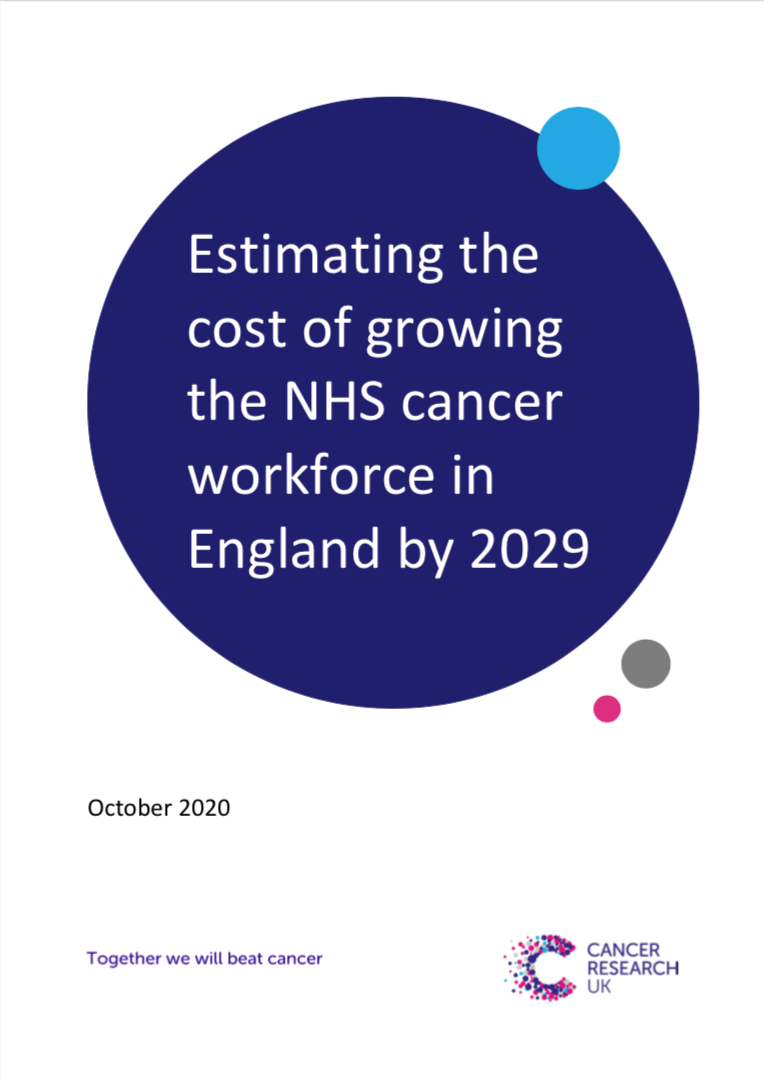A new report by Cancer Research UK urges the government to increase the radiography workforce by 45% over the next decade to safeguard NHS cancer services.
A shortage of staff was identified in the 2015 Cancer Strategy for England as a ‘make or break’ issue, and in 2018 Health Education England set out that seven key professions would need to grow by 45% by 2029.
CR-UK now estimates that additional investment of £142m-£260m over the next three to five years will be needed to accelerate current growth in order to meet the 45% target.
In diagnostic radiography this would mean an extra 2,591 FTE staff on top of the expected growth of 4,158, and therapeutic radiography staffing would need to grow by an extra 1,281 beyond the expected increase of 672.
The CR-UK report, ‘Estimating the cost of growing the NHS cancer workforce in England by 2029’, calls on the government to address the funding gap in Comprehensive Spending Review (CSR).
The report states: ‘The diagnosis, treatment and support of people living with cancer relies on a range of skilled NHS staff conducting specialist tasks such as performing and reporting on diagnostic tests and providing different forms of treatment and support.
‘Ensuring that the NHS has enough skilled staff, now and in the future, is therefore a vital part of fulfilling the ambitions of the NHS Long Term Plan and improving outcomes for cancer patients.’
The SoR contributed to the work by CR-UK and recently submitted its own evidence to the government’s CSR, calling for an increase of 4,000 diagnostic radiography staff in England.
Director of Professional Policy Charlotte Beardmore said the Society was pleased to have been invited to contribute to the report and thanked CR-UK for this ‘important work’.
‘The recommendations align with the large increases in workforce identified in the recently published Richards report for imaging services, and provide costings to support this growth.
'The methodology only focuses on the seven identified workforce groups and therefore doesn’t include the required growth in support workforce which the Richards report refers to, nor does it include any aspects of additional workforce required to support workforce transformation and higher levels of practice but it serves to identify investments require to support initial growth based on current modelling.
'Importantly, therapeutic radiography is included and the extra workforce growth above the expected increase is considerable. We hope that government bodies utilise this evidence together with the Richards report and the CR-UK Full Team Ahead report, together with our CSR evidence to support the necessary investment in the Diagnostic and Therapeutic Radiography workforce.'
CR-UK also suggested a range of ways to improve recruitment to the seven professions, many of which are facing high vacancy levels. The report states: ‘NHS England and Improvement, along with HEE, should assess the feasibility of the different scenarios for increasing inflows. This is particularly important in light of the likely restrictions arising from the Covid-19 pandemic and the UK’s exit from the EU, which may reduce international recruitment.'
Download the report here: Estimating the cost of growing the NHS cancer workforce in England by 2029
